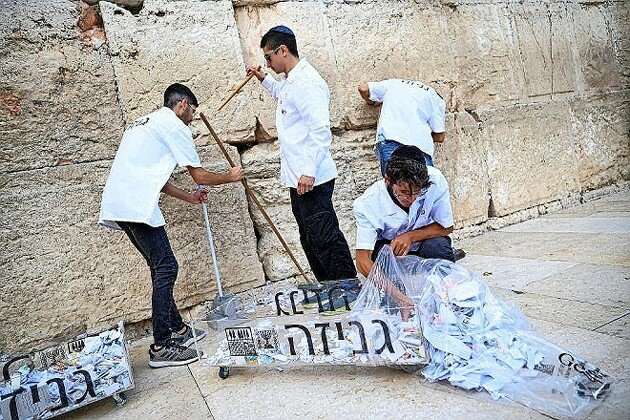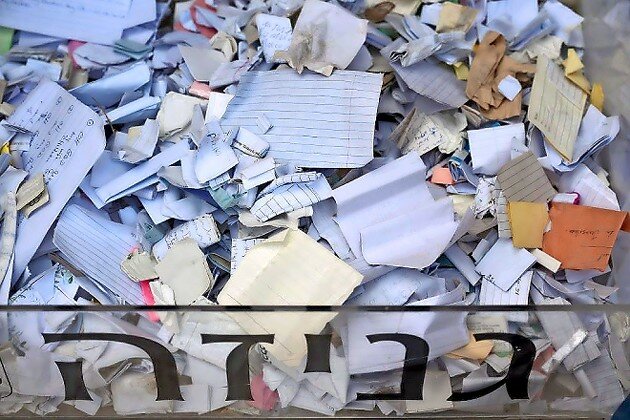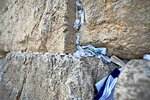Clean sweep at Kotel
One of Jerusalem’s most iconic religious traditions is the custom of writing prayers on scraps of paper and placing them in the cracks of the Kotel.
Visitors of all faiths leave thousands of notes — ptakim — to G-d, praying for personal success, a loved one’s health, Middle East peace and a myriad of other things.
The custom stems from the teaching that G-d’s presence never left the Western Wall and that prayers ascend to heaven through the adjoining Temple Mount. People unable to visit can also write notes online, which are printed out placed in the wall by staff.
Before Passover and the High Holidays, the Western Wall Heritage Foundation removes the notes under the supervision of Rabbi Shmuel Rabinowitz, chief rabbi of the Western Wall and the Holy Places.
Notes removed from the wall are buried in a cemetery on the nearby Mount of Olives. Workers are careful to respect the privacy of the prayers and do not read the notes, the Foundation said.
The Kotel, also known as the Wailing Wall, is the only remnant of a retaining wall encircling the Temple Mount built by Herod and is the holiest site where Jews can freely pray. The Temple Mount, where the First and Second Temples stood, is the holiest site in Judaism but Jewish prayer is restricted there. —JNS

 44.0°,
Mostly Cloudy
44.0°,
Mostly Cloudy 









